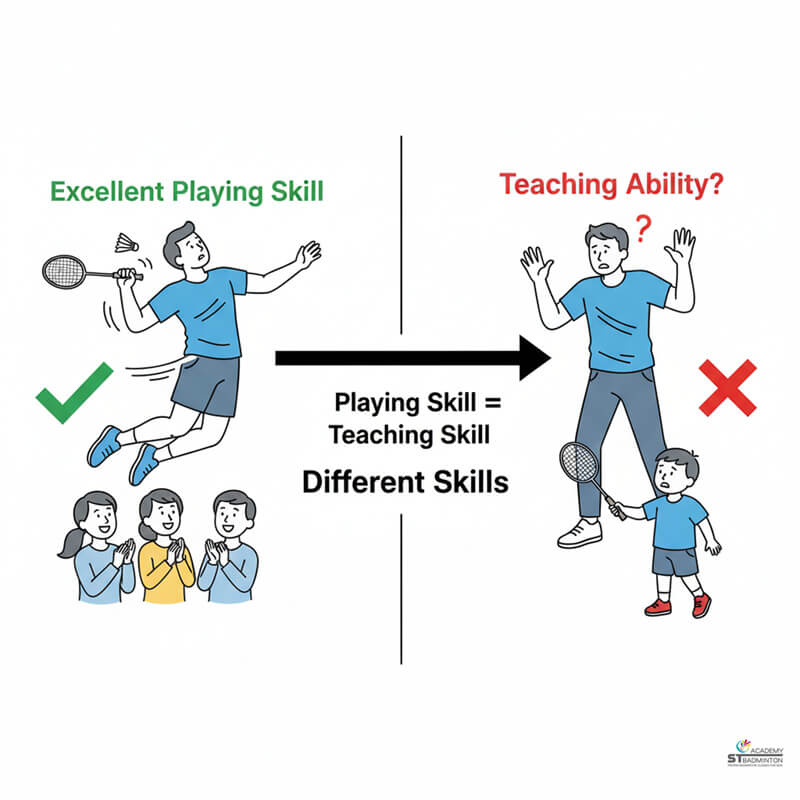Welcome to ST Badminton Academy’s badminton training in Malaysia! I’m here to help guide you on how best to improve your performance. Training for badminton is all about building strength, stamina and agility – which are key components of any successful badminton game. In this article, I’ll be outlining specific exercises that will help you reach peak performance in no time. So what are we waiting for? Let’s get started!
Warm-Up Exercises
Badminton is an intense and demanding sport that requires both physical and mental preparation. Before beginning any kind of training, it is important to warm up properly in order to prevent injury, increase joint stability, and prepare the body for a tougher workout.
A good warm-up should start with some light stretching or dynamic movement exercises such as arm swings and leg lifts which will help loosen up your muscles. You can also add basic aerobic activities like jogging or jumping rope to further increase your heart rate and circulation so you’re ready for more strenuous cardiovascular training.
At this point, you should already be feeling mentally sharper and physically warmer due to increased blood flow throughout your body. Now that you are adequately prepared, let’s move on to the next phase of badminton fitness: cardio!
Cardiovascular Training
Now that we’ve warmed up, it’s time to start focusing on our cardiovascular training. Cardiovascular fitness is an essential component for any badminton player, as it helps us build endurance and keep going during long rallies. Here are four steps you can take to improve your badminton fitness levels through cardio:
| Step | Cardiovascular Training Recommendations |
|---|---|
| 1. | Interval Training: Alternate between high-intensity exercises (e.g., sprinting) and low-intensity activities (like jogging). This strengthens the heart and enhances respiratory efficiency. |
| 2. | Endurance Training: Engage in activities like running or cycling at a steady pace over longer distances to increase stamina and maximize oxygen uptake capacity. This builds muscle strength and improves aerobic capacity. |
| 3. | Strength Training: Incorporate regular strength training into your routine for muscular power and overall physical health. Include weightlifting, plyometrics, and calisthenics to target different muscle groups effectively. Consistent strength training enhances court mobility and increases the frequency of powerful shots. |
This table provides a clear breakdown of the four steps for improving badminton fitness levels through cardiovascular training.
Badminton players require strong core muscles for stability, power, agility, and balance. That’s why it’s important to incorporate core exercises into our workout routines – let’s look into how this can help next!
Core Training
I’m sure you’ve heard this before, but in order to improve your badminton fitness levels through training, it all starts with a good nutrition plan. It’s important to make sure that you are eating the right foods and getting enough of the necessary vitamins and minerals that will help fuel your workouts. Eating healthy is just as important for badminton players as it is for any other athlete.
Next up when it comes to improving your badminton fitness levels is footwork drills. These should be done regularly and include movements such as skipping, running short distances, shuffling from side to side or back-and-forth, hopping on one leg, etc. All of these exercises can help increase strength and agility while also helping to build endurance so that you can outlast opponents during long rallies. And don’t forget about stretching; always do some basic stretches before beginning any workout routine to prevent injuries!
Now let’s move on to upper body strength training
Upper Body Strength Training
Hey there, if you want to improve your badminton fitness levels, I’d recommend focusing on upper-body strength training. Push-ups and pull-ups are great for building core strength and helping with your endurance. You can also try hand grip exercises to really work on your grip strength. These exercises will help you deliver powerful shots during your badminton game. So, let’s get started!
Push-Ups
Hey everyone! So, today we’re gonna talk about upper body strength training for badminton. Now, I know push-ups are a tough one but trust me – they can make all the difference in your game! Here’s why: firstly, you’ll be able to generate more power with every shot and move around the court faster due to improved muscle endurance from regular push-up drills.
Secondly, you’ll increase your balance which will help when performing formulaic drills or making those quick court sprints. And lastly, it will give you better posture on the court so you look like an absolute pro!
All of this means that by doing just a few simple push-ups each day, you’ll have your opponent quivering at their knees before they even take their racket out of their bag! Other than choosing a good racket and also remember to choose the best racket restring in Malaysia. So what are you waiting for? Get up there and get pushing!
Pull-Ups
Alright, now that we’ve established the importance of push-ups for badminton players, let’s talk about pull-ups. Pull-ups are a great way to build mental toughness and physical strength at the same time! You’ll be able to increase your core stability while also building up your upper body muscles – both of which are incredibly important in the game of badminton.
Plus, by doing regular pull-up drills you can improve your ability to jump higher over the net or make quick changes in direction when playing shots. And don’t forget about coordination too – jumping rope is another fantastic exercise for developing agility on the court as well as teaching you how to control different shot trajectories with accuracy and finesse.
So if you want to stay ahead of the competition, incorporating these exercises into your daily routine will have you dominating every match! Don’t wait any longer, get out there and start training smarter today!
Hand Grips Exercises
Now let’s delve into hand grip exercises to help you get a powerful and consistent smash. These are an essential part of badminton because they will improve your strength for those long rallies and power shots, as well as control over shot trajectories. I recommend that you include some finger-strengthening drills in your daily routine – like squeezing or pinching objects with varying levels of difficulty – so that you can increase the speed and accuracy of your forehand and backhand strokes.
Plus, this type of exercise is great for developing coordination when hitting those tricky drop shots! So don’t be afraid to push yourself out of your comfort zone; these types of exercises can make all the difference during intense rallying drills. Keep it up and you’ll be smashing with confidence in no time!
Lower Body Strength Training
As the saying goes, “the lower body is where power comes from”. It’s essential for badminton players to build strong and agile legs in order to produce powerful strokes. Strength training should focus on squats, lunges, and calf raises while adding speed drills like high knees or skipping rope. Agility drills such as side shuffles or cone drills can also help improve coordination and balance.
Flexibility is key when it comes to preventing injuries during play. To increase flexibility, try dynamic stretches that replicate movements found within the game of badminton itself. You could also do static stretching which involves holding a particular position for a certain amount of time to stretch out muscles further. Doing these regularly will ensure your muscles are properly prepared before each game.
Being well-rounded with good fitness levels doesn’t just mean having good upper and lower body strength – it means taking care of every aspect of your physical conditioning including flexibility too. Understanding how different exercises target areas differently can make all the difference between winning and losing on the court.
Flexibility Training
Stretching is an important part of any badminton fitness routine. I encourage my athletes to incorporate static stretches into their warm-up and cool-down sessions. Dynamic mobility exercises are also beneficial for improving flexibility and can be used to supplement static stretching.
It’s important to focus on correct form to prevent any injuries. I always emphasize that you should never push too hard during stretching and mobility exercises. Injury prevention should be at the forefront of every badminton fitness program. Using proper technique, understanding your limits and listening to your body will help you stay injury free.
Stretching Techniques
Hey everyone! As your badminton fitness trainer, I’m here to talk about one of the most important aspects of training: flexibility. Flexibility is critical for proper technique and avoiding injury when playing badminton. Stretching techniques are an essential part of any good training routine designed to increase your range of motion and power on the court.
One way you can improve your flexibility is by incorporating power yoga into your program. Power yoga combines traditional poses with dynamic breathing exercises that will help stretch out tight muscles and increase mobility in areas like the shoulders, legs, back, and hips. This type of stretching helps build strength while increasing overall coordination and body awareness.
Finally, speed drills are a great way to work on improving agility as well as strengthening and stabilizing muscles around key joints such as the ankles, knees, and wrists—all necessary for executing quick movements on the court without risking injury.
Speed drills should be done under safe conditions (such as having enough space) with proper form in order to ensure maximum benefits from each drill session. So if you’re ready to become more flexible and powerful on the court, get started today with some stretching techniques combined with speed drills!
Dynamic Mobility
Alright, now that we know about stretching and speed drills for improving flexibility and agility, let’s shift our focus to dynamic mobility. Dynamic mobility is a type of training focused on building coordination in the body through footwork drills and agility exercises.
This type of training helps you move more freely and efficiently around the court while reducing your risk of injury when playing badminton. You can improve your dynamic mobility by incorporating footwork drills such as shuffling side-to-side or forward-backward into your routine.
Agility drills like jumping jacks, lateral skips, or quick feet are also great ways to work on increasing balance and coordination while strengthening and stabilizing muscles throughout the body. All these drills should be done with proper form and safety considerations taken into account so you can get the most out of each session. So if you want to become more agile on the court, start incorporating some dynamic mobility exercises into your program today!
Injury Prevention
Now that we’ve discussed stretching, speed drills, and dynamic mobility exercises for improving flexibility and agility on the court, let’s move to injury prevention. As a badminton fitness trainer, I cannot stress enough how important it is to look after your body through proper nutrition habits and hydration strategies.
When you give your body all the necessary vitamins and minerals from fresh fruits and vegetables as well as adequate water intake, you are helping ensure that muscles stay healthy and strong. Eating healthy foods regularly will help fuel your energy levels during practice or a match so you can perform at your best without risking any injuries.
It’s also important to make sure you get plenty of rest in between training sessions since this allows for ample time for recovery before getting back out there again. The more rested you are, the less likely you are to sustain an overuse injury due to fatigue.
Finally, be sure to warm up properly with some light cardio before each session followed by static stretches so that your muscles don’t suddenly contract while playing badminton which could lead to further injury down the line. Taking these preventative measures now will pay off tremendously when competing in tournaments later!
Plyometric Training
I’m going to show you how plyometric training can help improve your badminton fitness levels. Plyometrics are explosive movements that involve powerful jumps and hops, which will raise your agility and speed on the court. Here’s what I recommend:
| Step | Recommendations |
|---|---|
| 1. | Start with basic agility drills: lateral skips and skipping ropes. These motions enhance coordination for badminton. |
| 2. | Incorporate speed drills: include sprinting or running up stairs for short bursts of intense activity. This boosts anaerobic endurance for higher intensity during games. |
| 3. | Focus on jump exercises: engage in box jumps or tuck jumps to strengthen the lower body, promoting power, explosiveness, quickness, and balance simultaneously. |
This table breaks down the plyometric training recommendations for improving badminton fitness levels, making it easier to follow and understand each step.
These activities should be done consistently in order to maximize their effects; they’ll help build a strong foundation of agility and speed necessary for successful badminton play! Now let’s move on to discuss recovery and rest – both essential components of any good workout program.
Recovery And Rest
Having discussed the importance of plyometric training for improving badminton fitness levels, it is now important to consider how recovery and rest are equally as vital. After pushing yourself physically in a workout session, it is just as important to spend time recovering from that physical strain.
Rest allows your body to relax, but don’t be tempted to become inactive during this period! Mental relaxation can still be achieved through activities such as stretching or light yoga which will benefit you mentally and physically when preparing for your next workout session.
In addition, incorporating some form of physical therapy into your routine can be beneficial – integrating soft tissue massage with foam rolling has been proven to decrease inflammation after intense exercise. This will ensure that any muscle soreness experienced post-workout is kept at bay so that you can perform at optimum level during each subsequent session.
By taking adequate breaks between workouts and regularly engaging in restorative activity such as stretching or foam rolling, you are giving your body the best chance to recover properly and reach those goals set out on day one. Breaking up sessions with active rest periods means that you won’t burn out before reaching them – something all badminton players strive for!
Frequently Asked Questions

What Is The Best Way To Warm Up Before A Badminton Game?
Hey there badminton players! Before each game, it’s important to warm up properly. I always start off my warmup with some jumping jacks and stretching exercises. This helps me get the blood flowing so that my muscles are ready for action.
Doing these two simple activities can significantly reduce your chance of injury during a match and help you perform at your best. So don’t forget: before every match, do some jumping jacks and stretching exercises – your body will thank you later!
How Often Should I Be Doing Cardiovascular Training?
If you’re looking to improve your badminton fitness levels, then regular cardiovascular training is a must. I recommend doing some sort of aerobic exercise such as running or cycling at least 3-4 times per week for 30 minutes or more each session.
Additionally, incorporating plyometrics drills and dynamic stretching techniques into your workouts will help strengthen and condition the muscles used in badminton which will ultimately lead to improved performance during games.
What Are Good Core Exercises To Do To Improve My Badminton Fitness?
If you’re looking to improve your badminton fitness, then core exercises are a great place to start! Plyometric drills and agility drills are two of the best ways to strengthen your core. These types of exercises will help you become more powerful on the court while improving your overall endurance.
I recommend doing these drills at least three days per week for maximum results. Make sure that you take adequate rest between each drill session so that your body has time to recover properly before resuming training again.
How Can I Improve My Upper Body Strength Specifically For Badminton?
If you want to be the best badminton player, it’s important to focus on your upper body strength. Fortunately, there are some great exercises and drills that can help you achieve this goal.
Stretching is key; not only does it improve flexibility but it also helps with muscle coordination while playing. Another good way to build up your upper body muscles is by doing plyometric drills such as push-ups, pull-ups and chin-ups – these will all give you an edge during games. As a fitness trainer, I highly recommend taking the time out of your day to do these exercises in order to get the most out of your badminton performance!
What Lower Body Strength Exercises Are Best For Badminton?
If you want to improve your lower body strength for badminton, then plyometric and agility drills are an excellent way to go! Plyometrics involve explosive exercises such as jumping that target the muscles used in badminton.
Agility drills will help you build the quickness and reflexes needed to stay ahead on the court. I would recommend trying some lateral hops, skipping, and sprinting as a start. Doing these exercises regularly will give you an extra edge when playing badminton.
Improve Your Badminton Fitness Levels in Badminton Training Malaysia
It’s not easy to improve your badminton fitness levels, but it is possible. With dedication and commitment, you can reach the top of your game! I understand that there may be obstacles preventing you from training regularly, such as a busy work schedule or lack of motivation.
But if you are willing to find ways around these challenges and put in the effort required, then I am confident you will see great results.
So come on – push yourself out of your comfort zone and take your badminton skills to the next level! With consistency, hard work, and determination, you’ll soon be reaping the rewards of all your efforts.
You will feel more energized during games and have greater control over every shot. So don’t delay any longer – start improving your badminton fitness today!





